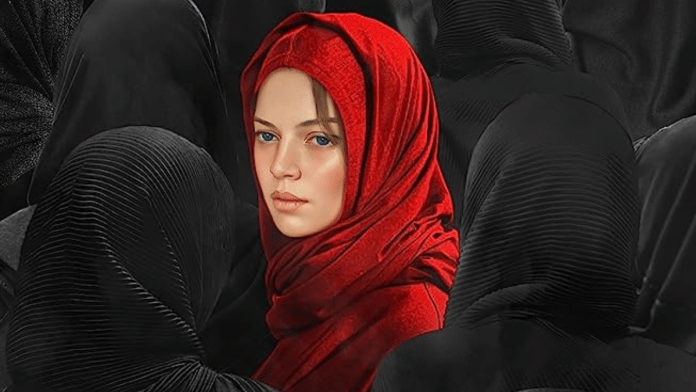As an author, I find great value in the power of cinema and visual art to delve into thought-provoking ideas. Sanjay Puran Singh Chauhan’s latest film, 72 Hoorain, is one movie that explores the complexities of Muslim identity, Islamic terrorism, and institutionalised propaganda. Releasing today, the film talks about how Muslim clerics propagate the idea that martyrdom can be achieved through jihad or suicide attacks and rewards one with 72 virginal nymphs in heaven. The film has received criticism for stereotyping Muslims and encouraging hate speech.
However, it is important to approach this film with a nuanced perspective, considering its focus on Islamists and terror group ideologues and scholars.
Let’s get one thing straight — as long as a work of art does not generalise the 200 crore Muslims worldwide and instead focuses on Islamists, terror group ideologues, and scholars who propagate extremist beliefs, followers of the faith should not have any issues with it. But in the case where some Muslims interpret it differently and contest the premises of the artwork, it calls for deeper introspection rather than simply censoring the piece of art.
It is not uncommon for Islamists and Communists to portray any form of critical discourse around Islam as an attack on Muslims. This necessitates us to distinguish between the exploration of extremist ideologies and the condemnation of Islam. By engaging in critical dialogue and discerning an artwork’s nuances, Muslims can contribute more productively to socio-cultural debates.
Also read: Jai Shri Ram chants, mantras, garlands—what happened when JNU screened 72 Hoorain
Caught in the crosshairs
The 2007 Pakistani film Khuda Kay Liye addressed ideas of terrorism, generalisation of the Muslim community, and even interpreted theology with sensitivity and maturity. True to the realities of Islamic radicalism and the Muslim experience, the film faithfully portrayed the victims of terrorism and how innocent Muslims, caught in the crosshairs of extremism and backlash from the clergy, navigate their faith.
Muslims should understand that if they appreciate movies like Parzania (2005), which generalises Hindus to a large extent in a negative light, they should also resist opposing movies that they think negatively generalises them. One can’t argue for banning a movie unless it explicitly incites violence against any group or individual. The Indian State has a responsibility to protect the fundamental right of freedom of expression guaranteed by the Constitution.
Consider movies such as Firaaq (2008), Fanaa (2006), My Name is Khan (2010), The Kashmir Files (2022), and The Kerala Story (2023), which were targeted by both Left and Right-wing groups. Keeping freedom of expression in mind, is it justifiable that we ban them? Shouldn’t we promote dialogue and understanding among different communities?
Also read: Sudipto Sen’s The Kerala Story isn’t ‘true’ – it’s steeped in damned lies &…
A paradigm shift
Over the last couple of years, with the release of The Kashmir Files, The Kerala Story, and now, 72 Hoorain, the Hindi film industry has undergone a noticeable paradigm shift. Earlier, movies mostly represented the majority Hindu community (though critics will find this debatable too), but now, they address the second-largest religious community in India — the Muslims. Some argue that this shift is a course correction, as Bollywood previously highlighted extremism within the Hindu community and spoke against Hindu communalism. Now, it is not shying away from addressing uncomfortable truths about the Muslim community.
This shift in narrative reflects the current times when Hindutva as a philosophy and political ideology is gaining prominence and has become a central tenet of many political campaigns. Supporters view it as a civilisational resurgence that balances secularism in India, while critics perceive it as a direct threat to other faiths.
I see the growing popularity of Hindutva as a golden opportunity to project the soul of India between two contrasting ideas, which can contribute more productively to society. Reconciliation requires open and honest dialogue, even while discussing the harshest realities, so that the ghosts of the past can be laid to rest. This approach allows all communities to confidently express differences they might have with each other and quell communal disharmony.
Movies are the easy targets
In the past, there have been instances where Muslim leadership has called for censorship of books, art, or movies they deemed blasphemous or controversial, such as Kamal Haasan’s Vishwaroopam (2013) and Mani Ratnam’s Roja (1992). In the past, Hindu intellectuals, reformers, thinkers, and artists have explored critical portrayals of their practices prevalent in the community. But within the Muslim community, there has been a lack of this self-critique and openness; opposing views are often met with threats.
Some of this uncritical opposition is evident among Hindu extremists too, who call for the boycott of movies such as Fanaa and Pathaan (2023).
Therefore, in many ways, movies have become easy targets due to the unpredictability of opposition they might invite.
Banning art not only reflects a sense of dictatorship but also indicates a reluctance to introspect and consider alternative perspectives. Fruitful communication plays a pivotal role in upholding a free society and fostering a creative culture. Throughout history, artworks in various forms—literature, theatre, painting, sculpture, music, and dance—have served as powerful tools for expressing ideas, emotions, social progress, envisioning new possibilities for humanity, problem-solving, and enhancing the quality of human life.
Can India, with its diverse population comprising Hindus, Muslims, Christians, Sikhs, Buddhists, Jains, Parsis, and Jews, develop a collective and evolved mindset where critical argumentation is appreciated without any fear of backlash? Or will Hindus always be expected to bear the torch of freedom of expression while critically examining the wrongs within their community?
Amana Begam Ansari is a columnist and TV news panelist. She runs a weekly YouTube show called ‘India This Week by Amana and Khalid’. She tweets @Amana_Ansari. Views are personal.
(Edited by Humra Laeeq)






